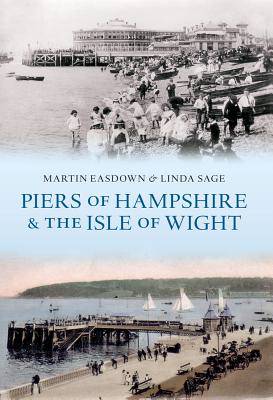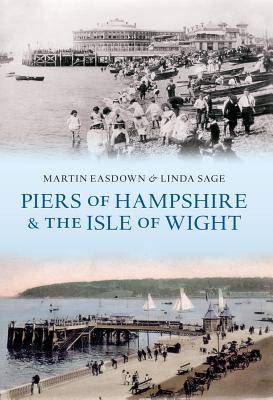
Door een staking bij bpost kan je online bestelling op dit moment iets langer onderweg zijn dan voorzien. Dringend iets nodig? Onze winkels ontvangen jou met open armen!
- Afhalen na 1 uur in een winkel met voorraad
- Gratis thuislevering in België vanaf € 30
- Ruim aanbod met 7 miljoen producten
Door een staking bij bpost kan je online bestelling op dit moment iets langer onderweg zijn dan voorzien. Dringend iets nodig? Onze winkels ontvangen jou met open armen!
- Afhalen na 1 uur in een winkel met voorraad
- Gratis thuislevering in België vanaf € 30
- Ruim aanbod met 7 miljoen producten
Zoeken
€ 30,95
+ 61 punten
Omschrijving
Despite their popular association with fun and frivolity, the function of piers as both an amusement centre and landing stage was varied, and nowhere was this better illustrated than on the coasts of Hampshire, the Isle of Wight and east Dorset. The area's association with piers dates right back to 1814 with the opening of Ryde Pier, often regarded as the earliest in the United Kingdom. Southampton opened a landing pier for steamers in 1833 and Portsmouth and Gosport followed suit in the 1840s. By the 1860s, seaside piers were becoming fashionable promenades over the sea and a 'must have' for any selfrespecting watering place. Some of the earliest landing piers, such as Ryde and Southampton Royal, took on a dual-purpose function as a landing/pleasure pier and pavilions and other attractions were provided on them. The Isle of Wight, increasingly popular as a holiday destination, saw numerous piers sprout from its coast, whilst in Hampshire pleasure piers were erected at Southsea, Lee-on-the-Solent and three in the Bournemouth area at Southbourne, Boscombe and Bournemouth. Piers were also erected for railway, military, industrial and pleasure boat purposes, and the fascinating, diverse and interesting histories of all the region's piers can be found in this comprehensive and well-illustrated volume.
Specificaties
Betrokkenen
- Auteur(s):
- Uitgeverij:
Inhoud
- Aantal bladzijden:
- 256
- Taal:
- Engels
Eigenschappen
- Productcode (EAN):
- 9781445603551
- Verschijningsdatum:
- 15/09/2011
- Uitvoering:
- Paperback
- Formaat:
- Trade paperback (VS)
- Afmetingen:
- 172 mm x 248 mm
- Gewicht:
- 696 g

Alleen bij Standaard Boekhandel
+ 61 punten op je klantenkaart van Standaard Boekhandel
Beoordelingen
We publiceren alleen reviews die voldoen aan de voorwaarden voor reviews. Bekijk onze voorwaarden voor reviews.











